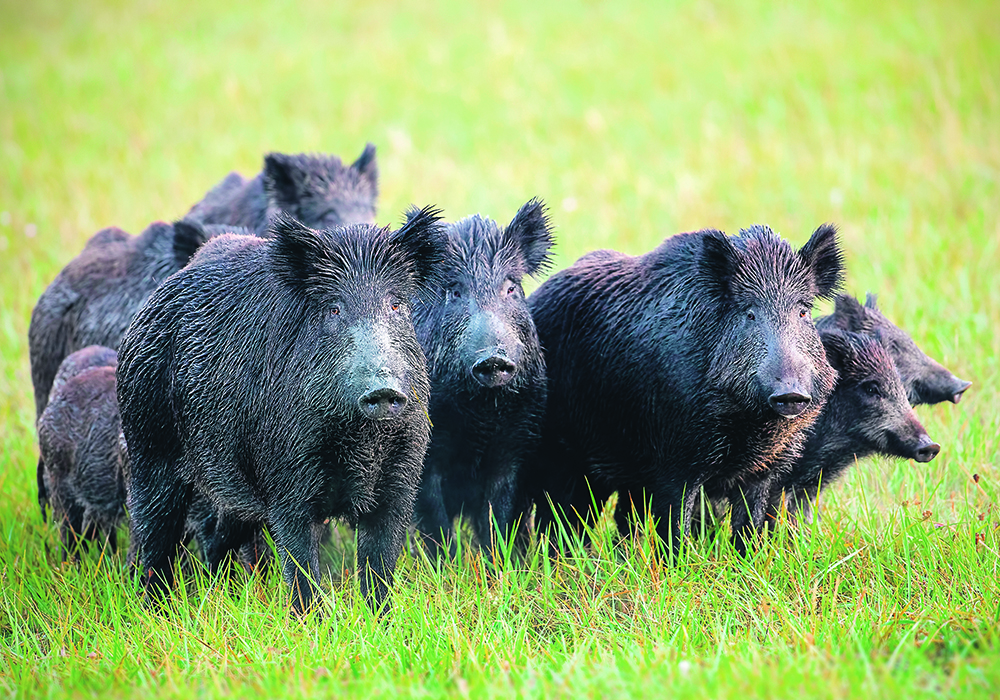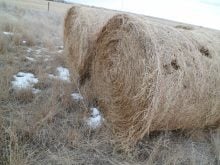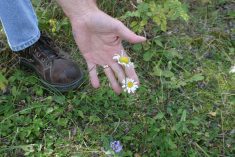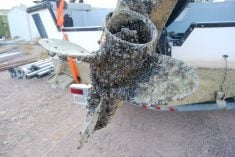Project hopes to increases awareness of disease potential, distribution in Alberta and interaction with livestock farms
A research project costing nearly $1 million will try to pinpoint how much of a threat the increasing spread of invasive wild pigs in Alberta poses to the province’s producers.
Wild pigs can carry numerous diseases that could affect livestock such as cattle as well as infect humans, said Mathieu Pruvot, an assistant professor at the University of Calgary’s Faculty of Veterinary Medicine.
“And the point is not to alarm everyone that they’re bringing all bad stuff, but we really want to understand how these risks are going to change.”
Read Also

Why feds imposed EV tariffs
Moe and Kinew have a fight on their hands when it comes to eliminating the EV tariff. Canada has to worry about pissing off the U.S. and Mexico and hundreds of thousands of auto workers.
He said wild pig populations are expanding exponentially across the prairie provinces. Apart from carrying diseases, they can be destructive because they like to root and dig in soil, disrupting everything from crops to pastures.
Just how severe their spread can become if left unchecked is demonstrated by jurisdictions such as Texas, where wild pigs now number in the millions.
“So, it is a different scale down there to the point that I think we’re still in a good place compared to them — where we still have some hope to control the population.”
Pruvot will lead a four-year research project into the problem that will include scientists from Alberta Agriculture, Forestry and Rural Economic Development, as well as the Canadian Food Inspection Agency. It will also include Alberta Beef Producers and Alberta Pork.
The provincial government’s Results Driven Agriculture Research (RDAR) fund will provide $432,000 toward the $973,240 project. The money will be partly drawn from the federal-provincial Canadian Agricultural Partnership, said a statement by RDAR.
“From an animal health perspective, ensuring continued preparedness for pathogen introduction or emergence is essential to protect the livestock industries from biosecurity threats, to maintain disease-free status requirements for live animal and meat product exports, and thereby, to secure economic opportunities for producers.”
Pruvot said invasive wild pigs have so far been found in about 24 out of 74 municipalities in Alberta. Although they have mostly been detected in the central part of the province, they have also been found as far south as the Cardston area near the United States border, as well as near Cochrane just west of Calgary.
They were discovered last year in Elk Island National Park just east of Edmonton, raising fears the city could end up being the first in Canada to contain wild pigs if action isn’t taken. They have attacked and even killed people in the U.S., said Pruvot.
“They’re quite aggressive and they have pretty sharp tusks, so they can really cause damage if they attack… and I would say particularly for ranchers and farmers that live in places that are going to attract wild pigs, this is definitely an added risk for them.”
The animals are classed in Alberta as an agricultural pest when at large. Landowners are required by law to control or destroy them to prevent them from being established on their land.
However, Pruvot said there is evidence that strategies such as hunting wild pigs instead have the opposite effect of increasing their spread by dispersing the animals, which like to form groups known as sounders.
“It just encourages them to spread a lot faster, and in some cases even reproduce faster, so it’s been a challenge.”
Wild pigs can have litters of six or more piglets, and they can reproduce all year.
“There really isn’t a seasonal pattern of reproduction, and so the higher reproductive output is really what is making them so successful at invading across the prairie provinces….”
Besides pinpointing diseases, the research program’s two other main objectives include understanding the distribution of wild pigs in Alberta, said Pruvot.
“So, what are some of the landscape factors and landscape features that help them spread and trying to predict where they’re going to spread next.”
The other objective will be to understand the potential interactions between wild pigs and operations such as pig farms and cattle ranches, he added.
“How are they interacting with livestock? What are they getting into? What’s attracting them, and what kind of contact they’re establishing, both direct contact with other animals, but also indirect contact through water and feed and so on.”
















